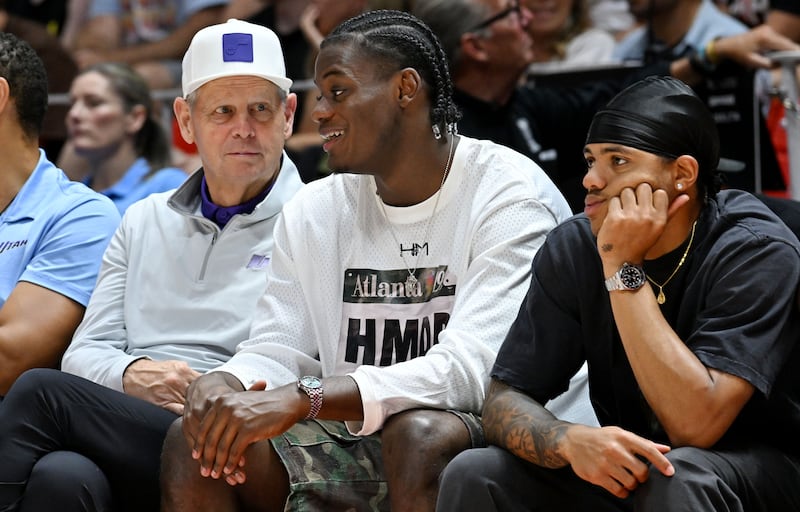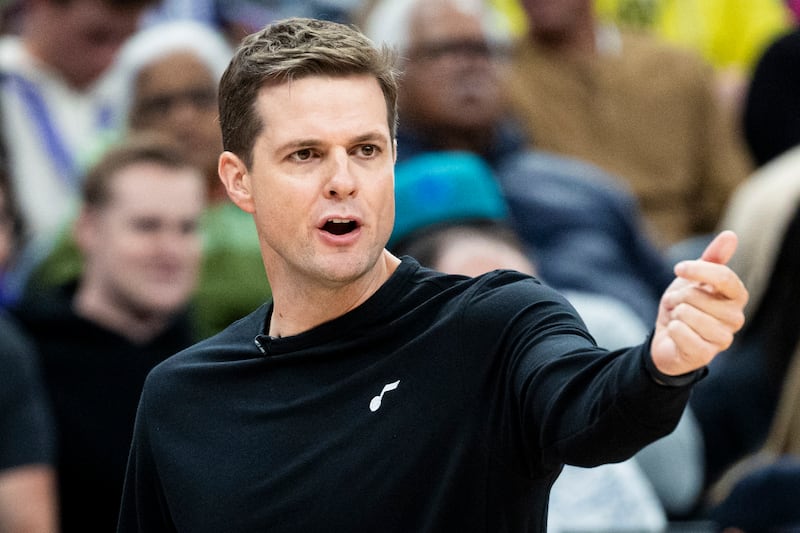The Utah Jazz can’t do this much longer.
Collecting a bundle of players through the draft and allowing them a long leash and lengthy runway is a great way to tank to the bottom of the standings. But the time is coming very soon when the Jazz will have to start moving forward, and not all of the youngsters on this roster are going to be here for the next stage.
There’s no doubt the Jazz are eyeing the top of the 2026 draft class for one more high-level prospect — BYU’s AJ Dybantsa, Kansas’ Darryn Peterson and Duke’s Cam Boozer are currently being salivated over by executives across the league. But after the 2026 draft is over, the path that makes the most sense for the Jazz is to try to work their way up from the bottom of the NBA standings.
There are a number of roster decisions that will need to be made along the way — will Lauri Markkanen be a permanent fixture in the Jazz’s longterm plans? Can the Jazz repair the relationship with Walker Kessler, and will he be here for the next phase? What players can they bring into the fold via trade or (wishful thinking) free agency?
But the question that really can be answered, in large part by what happens this season, is which of the Jazz’s young players are actually worth keeping around?
Jazz coach Will Hardy has done a good job of making them all think that they can be more than just a rotational piece, that each one can be a star in this league.
“I said this to all of our young guys at the beginning of the summer — we’re not waiting on somebody to come and save us. You’re not waiting for somebody to come and walk through the door and ‘Oh, now we’re good,’“ Hardy said. ”Every good player in our league has had a breakout year. Some of them it’s their first year, some it’s their third year, some it’s their fifth year. And there’s nothing that says that somebody in our locker room can’t have a breakout year this year.”

And every year, there are players who slowly fall out of rotations and are not extended, and, eventually, you never hear from them again. Every year, there are players who rise to the top and there are players who sink below the level of hope and potential that had kept them afloat previously. There are players, every single NBA season, that are unceremoniously traded away and then forgotten at the end of the bench.
This could be that year. The pressure is on for all of the Jazz’s recently drafted players and players on two-way deals — Taylor Hendricks, Keyonte George, Brice Sensabaugh, Cody Williams, Isaiah Collier, Kyle Filipowski, Ace Bailey, Walter Clayton Jr., John Tonje and Elijah Harkless.
The pressure is on to either prove that they can make meaningful contributions to a team that wants to go beyond 20 wins. The pressure is on to have a season that leaves the front office wanting more, rather than questioning their decisions. Because if they don’t, this could be the end of their journey with the Jazz.

There are definitely certain players with a little more leeway than others. The Jazz are going to want to give extra time and invest a little more hope in Hendricks now that he’s returned from a season-long injury. They have a lot of hope already riding on Bailey and he’ll definitely be around beyond this season.
But the Jazz can’t continue to field a roster completely made up of players that are under 24 years old, because in order for the players to fully develop, this roster needs more balance.
“Veteran players are important, because one, they have what our young players want, and that is longevity in the NBA,” Hardy said. “And then ultimately, in the game, we need the team to function, and a couple of young players playing on the court with a couple of veterans can be a good balance, because those veterans can help the young players.”
And the Jazz want veteran players that they also see as long-term fixtures. Currently, the vets on the team (save Markkanen) are mostly here as place holders. They serve a purpose now — they can help players improve while not hurting the books. But there’s nobody that thinks that Kevin Love, Jusuf Nurkic and Georges Niang represent the veteran core that can help this team contend for something real.
In order to get to that place, where the Jazz feel like they can actually start competing for something real, they have to know which young players they’re going to throw their weight behind. They can’t forever live in this place of uncertainty and wondering. They’ll have to commit to those who look like they can achieve longevity, and move on from those who do not.
There will need to be a level of effort to improve skills and show that improvement on the court, but there’s also a mental component to this, and Niang, who has been through this, explained it perfectly.
“I think we have a good, special, young core group, and the sky’s the limit. But ... it’s on them,” he said. “I may be being dramatic, but it’s almost like you do anything to get an opportunity, right? So treat every day as if you’re fighting to get oxygen. That’s how bad you have to want it. ... And there’s going to be some guys that do that, and then there’s going to be some guys that don’t, and that’s where the separation comes.”



